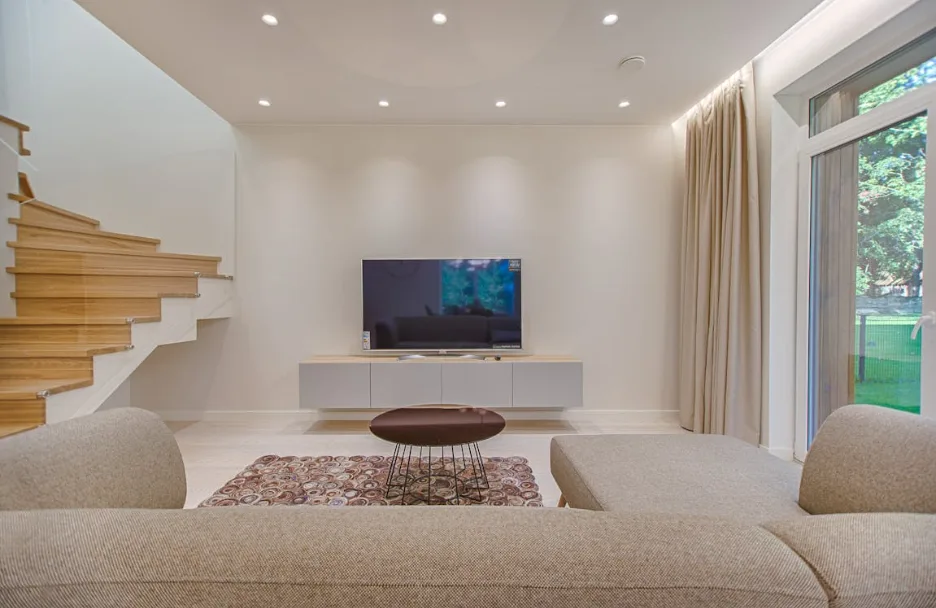When a home feels crowded, it’s not always because of size; it’s often because of how the space is used. Furniture, décor, and even layout choices can make a room feel smaller than it is. Many people in Dubai want homes that are stylish yet practical, where every corner looks intentional. That’s exactly what minimalist interior design delivers.
Minimalism isn’t about stripping away everything you own. It’s about creating a balance between function and beauty, keeping only what matters, and making spaces feel calm and open. If you’re looking for ways to maximise your space, this design style offers practical and beautiful solutions.
The Rise of Minimalist Interior Design: Why It Works
Minimalist style interior design rests on a simple principle: less is more. Instead of filling a room with unnecessary items, the goal is to highlight essentials and create harmony. This doesn’t mean your home should feel bare. It means choosing fewer, better-quality items that serve both form and function.
Neutral colors, clean lines, and uncluttered surfaces are the foundation. White, beige, and soft greys often dominate, but warmer tones and natural materials keep the look from feeling too stark. The beauty of this approach lies in its versatility; it works for apartments, villas, and even luxury interiors.
Key Principles of Modern Minimalist Design
When we talk about modern minimalist interior design, we’re referring to a style that combines minimalism with contemporary trends. This is where innovation meets simplicity. You’ll find concealed storage, modular furniture, and technology that blends seamlessly with design.
For example, built-in shelving can replace bulky bookcases, while wall-mounted lighting frees up floor space. Using stone, metal, and wood finishes adds contrast while keeping the design cohesive. The modern version of minimalism is not rigid; it’s flexible enough to feel comfortable and stylish at the same time.
Transforming Your Living Room with Minimalism
The living room sets the tone for the rest of the home, and adopting a living room minimalist interior design can instantly make your space look larger. Large sofas with bulky arms or oversized entertainment units can overwhelm a room. By switching to sleek, functional furniture with open bases and slim frames, the space feels lighter.
Natural light also plays a role. Minimalist living rooms often use sheer curtains or no curtains at all to let light pour in. A single piece of statement art, a textured rug, or even a potted plant can bring warmth without clutter. The aim is to make the room both social and serene.
Creating a Calm Bedroom with Minimalist Design
The bedroom should feel like a retreat, and bedroom minimalist interior design is perfect for creating that sense of calm. Start with the bed: a simple, low-profile frame with neutral bedding immediately sets the tone. Built-in wardrobes reduce visual noise and help keep surfaces clear.
Color is also important. Muted palettes create restfulness, while layered textures, like linen sheets, wool throws, or a wooden headboard, add comfort. Instead of multiple decorative items, choose one meaningful piece, such as a framed photo or a soft light fixture. The result is a bedroom that feels both inviting and uncluttered.
Minimalist Interior Design for Small Spaces
Small spaces benefit the most from a minimalist interior approach. In compact apartments, clutter accumulates quickly, making rooms feel cramped. Multi-purpose furniture, like a sofa that turns into a bed or ottomans with hidden storage, becomes essential.
Mirrors create the illusion of more space, while open shelving replaces heavy cupboards. Light colors visually expand the room, and simple layouts prevent it from feeling crowded. By focusing on essentials, even the smallest studio apartment can feel comfortable, modern, and spacious.
Lighting Tips for a Perfect Minimalist Space
Lighting transforms a minimalist room from plain to impressive. With a minimalist interior design style, the goal is to highlight architecture and create atmosphere without excess. Large windows, custom doors, and open layouts maximise natural light during the day.
At night, carefully placed lighting becomes part of the design. Recessed ceiling lights, slim wall sconces, and pendant fixtures create layers of brightness without clutter. Soft, warm lighting ensures the home feels welcoming instead of sterile, while maintaining the clean minimalist aesthetic.
Mastering the Layout of a Minimalist Living Room
When designing an interior design minimalist living room, layout is as important as furniture. Minimalism embraces open spaces, so the arrangement should prioritise flow. A sofa against the wall, a low coffee table, and uncluttered pathways make the room feel larger.
Every piece should serve a purpose. Instead of multiple small decorations, one central feature, such as a sculptural lamp or modern coffee table, becomes the focal point. The result is a room that feels open, intentional, and elegant, without unnecessary distractions.
How Luxury Minimalist Design Stands Out in Interiors
Minimalism and luxury may sound opposite, but luxury minimalist interior design blends them seamlessly. Here, the emphasis is on high-quality materials, bespoke furniture, and precision finishes. A marble countertop, custom cabinetry, or handcrafted furniture elevates simplicity into elegance.
The key is restraint. Instead of filling a room with expensive items, the luxury minimalist approach chooses a few standout pieces that set the tone. A perfectly balanced space with fine details feels far more luxurious than one crowded with décor.
The Role of Decor in Minimalist Homes
Minimalism doesn’t mean avoiding decor completely; it means being intentional. Plants are often used in minimalist interiors because they add life without clutter. One large potted tree in a living room, for instance, makes more impact than multiple small accessories.
Textures also matter. Natural fabrics, raw wood, or stone accents create depth and interest without overwhelming the design. This careful use of decor ensures the space feels personal and welcoming while staying true to minimalist principles.
Maintaining Your Minimalist Home: Practical Tips
Adopting minimalism is one step, but keeping it over time is another challenge. Minimalist homes require ongoing attention. Every few months, ask yourself whether the items in your home still serve a purpose or bring value.
Storage solutions such as hidden cabinets, modular shelves, and under-bed compartments make it easier to stay organised. Once the habit forms, you’ll notice benefits beyond design: less stress, easier cleaning, and a home that always feels ready to welcome guests.
Conclusion
Minimalist interior design is more than a style trend; it’s a way of living. By focusing on what matters and letting go of the rest, you create spaces that are not only beautiful but also functional and calming. From living rooms and bedrooms to entire homes, minimalism makes every square meter count.
If you are in Dubai and ready to embrace this design style, Rawaa Interiors can help you create a space that is both practical and elegant. Reach us at +971 50 222 8146 or +971 52 934 3293, email interiorsbyalrawaa@outlook.com, or visit us at Office 1007, Le Solarium – Dubai Silicon Oasis – Dubai.
Frequently Asked Questions
What’s the biggest mistake to avoid in minimalist design?
The most common mistake is making a home feel empty instead of intentional. Minimalism isn’t about removing everything—it’s about carefully selecting pieces that add value and balance. A minimalist home should still feel comfortable and inviting.
Can minimalism work in traditional-style homes?
Yes, minimalism adapts to different architectural styles. Even in traditional homes, using neutral colors, streamlined furniture, and intentional decor choices can create a simplified, uncluttered look without losing character.
How can minimalism make small rooms feel bigger?
Minimalist design reduces clutter and focuses on open layouts, which helps maximise available space. Light colors, mirrors, and slim furniture enhance this effect, making compact rooms feel more spacious and functional without costly renovations.
Is minimalist interior design child-friendly?
Minimalist homes can be very child-friendly with the right choices. Durable finishes, hidden storage, and open layouts make it easier to keep spaces organised and safe, while reducing clutter that often builds up in family homes.
What materials are best for minimalist interiors?
Natural materials like wood, stone, glass, and linen work beautifully in minimalist interiors. They add warmth, texture, and character without crowding the design. When paired with neutral palettes, these materials bring both simplicity and elegance to the home.

